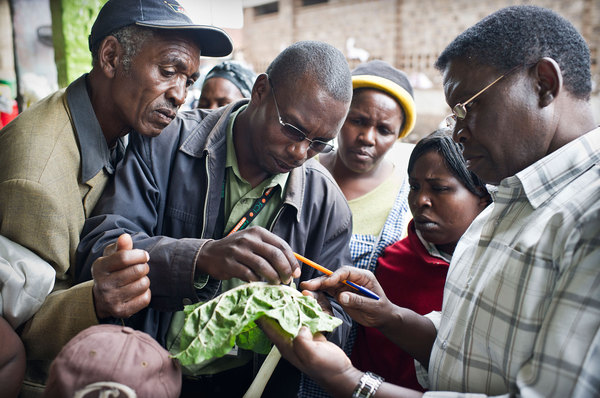Why the green peach aphid is such a successful pest
Recent research highlights why the green peach aphid (Myzus persicae) is one of the most successful crop pests. These findings will help further the development of effective management and control measures which will ultimately reduce worldwide crop losses.
New strategy required for delaying insect resistance to Bt crops
Transgenic Bt crops have been grown around the world since the 1990s and have contributed to increased yields by controlling agricultural pests. Due to the importance of this technology, there has been continuous study into the development of resistance to Bt crops and how best to avoid this happening. A recent investigation into the rapid…
How The Gates Foundation and Carlos Slim are Supporting Innovation and Crop Improvement For Farmers
The Bill & Melinda Gates Foundation and Fundación Carlos Slim have announced a partnership in support of efforts by the Centro Internacional de Mejoramiento de Maíz y Trigo (International Maize and Wheat Improvement Center CIMMYT) in Mexico to develop and disseminate higher-yielding, more resilient wheat and maize varieties.
What CABI Is Doing To Tackle Major Coffee Rust Outbreaks In Central America
Guatemala has declared a state of agricultural emergency after coffee rust fungus has affected approximately 193,000ha of coffee, equating to 70% of the national crop. As a result of the outbreak, Guatemala is releasing $13.7m (£8.7m) in emergency aid to help farmers buy pesticides and to inform farmers on ways to manage the disease. Honduras…
Deck The Halls With Boughs Of Holly
Holly leaves are a quintessential part of Christmas, whether they are hung up as decorations in boughs and wreaths, as a seasonal garnish on top of Christmas puddings or on the front of Christmas cards. Now new research published in the Botanical Journal of the Linnean Society has connected a combination of herbivore activity and…
Research Projects Into Improving Crop Plants Receive Major Funding
The University of Illinois has received a five year, $25 million grant from the Bill & Melinda Gates Foundation to improve the photosynthetic properties of key food crops, such as rice and cassava. The project, entitled ‘RIPE- Realising Increased Photosynthetic Efficiency’ has the potential to benefit farmers by improving the productivity of staple food crops. Increasing photosynthetic efficiency…
Slicing Into The Bread Wheat Genome
Bread wheat (Triticum aestivum) is a globally important crop that accounts for 20% of the calories consumed by the world’s human population. Major work is underway to increase wheat production by expanding knowledge of the wheat genome and analysing key traits, however due to the large size and great complexity of the bread wheat genome…
The Soybean Gene: Scientists Discover the Key to Nematode Resistant Soybeans
Soybean (Glycine max) is an important crop that provides a sustainable source of protein and oil worldwide in countries such as the USA, Brazil, Argentina, India and many African countries, including Nigeria, South Africa and Uganda. The soybean cyst nematode Heterodera glycines is a microscopic roundworm that feeds on the roots of soybean and is…
Discovery of genes for resistance to black Sigatoka in bananas
Researchers at Equador’s Biotechnology Research Centre (CIBE) have isolated the genes that are responsible for conferring resistance to black Sigatoka in the naturally resistant banana variety Musa Calcutta-4. Scientists have now been able to develop a protocol for the genetic transformation of banana cultivars Williams and Orito as well as the plantain cultivars Barraganete and…
Sweet Like Chocolate: Breeding Programs Combating Fungal Diseases of Cocoa in Ecuador
Cocoa, Theobroma cacao L. is the third most important export product in Ecuador; a country which produces 70% of the world’s highly prized Arriba cocoa. However, the sustainability of this crop is threatened by a number of devastating pest species including fungal diseases and insect pests. Among the most severe are the closely related fungal diseases…

